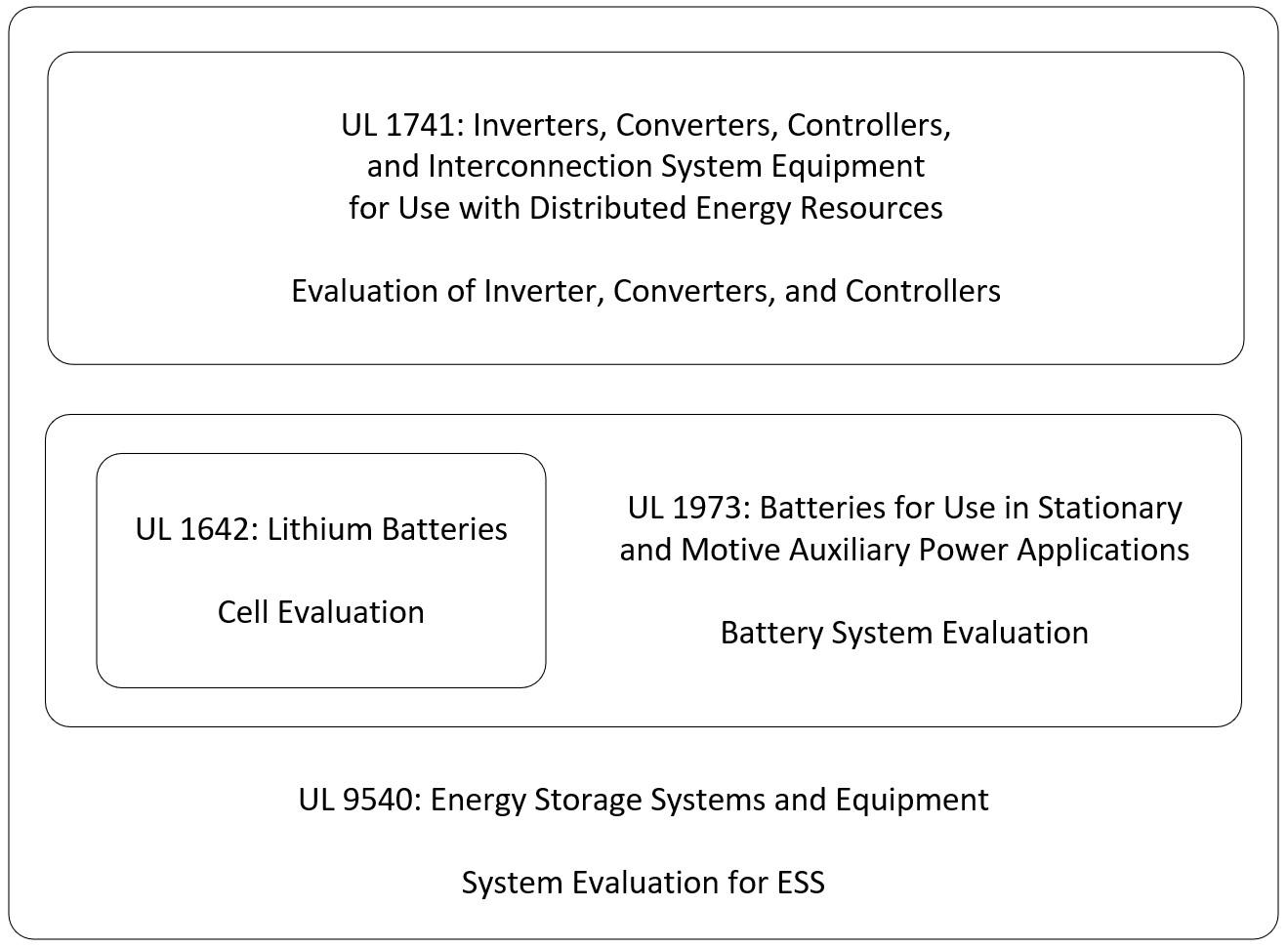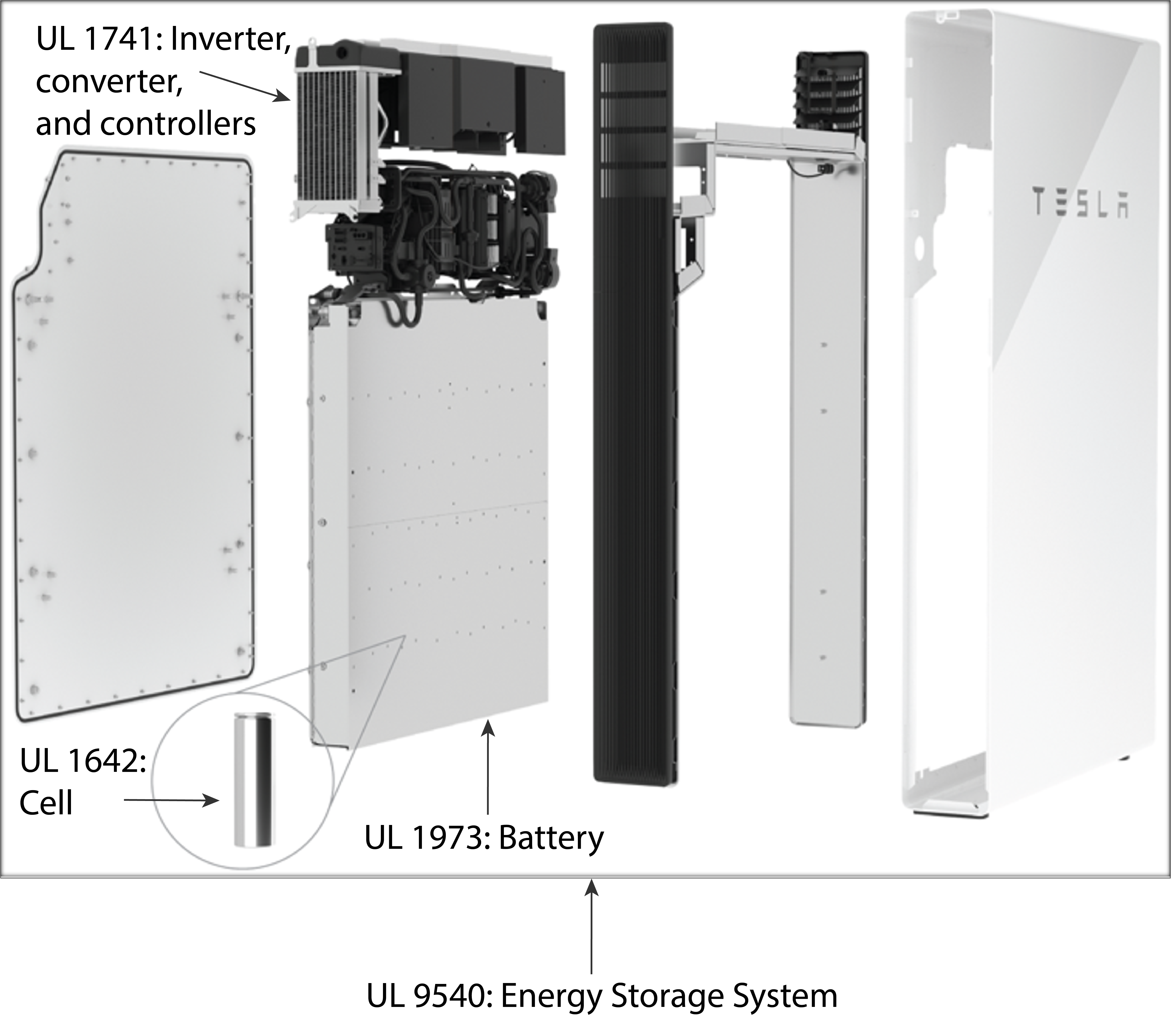Summary: ESS Standards
As a basis, electrochemical energy storage systems are required to be listed to UL 9540 per NFPA 855, the International Fire Code, and the California Fire Code. As part of UL 9540, lithium-ion based ESS are required to meet the standards of UL 1973 for battery systems and UL 1642 for lithium batteries. Additionally, all utility interactive ESS are required to be listed and labeled in accordance with UL 1741 for inverters, converters, and controllers.
In short, UL 9540 is a standard that evaluates an ESS at the system level. Each component within the ESS is required to be evaluated to their individual safety standards. This is shown in Figure 1 below.


Each of these standards defines the requirements for the design, construction, and performance needed to obtain a listing. These standards have stringent electrical, mechanical, and environmental safety tests. Once certified, the ESS product listing requires periodic follow-up on manufacturing processes and hygiene, to ensure the product continues to be built as originally tested and certified.
| Test Category | Performance Verification |
|---|---|
| Electrical |
|
| Mechanical |
|
| Environmental |
|
| Abuse |
|